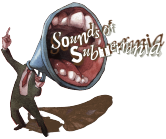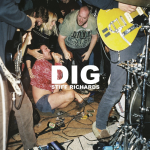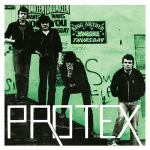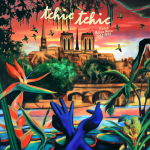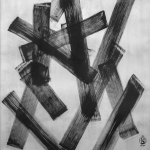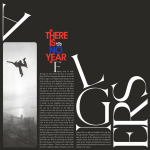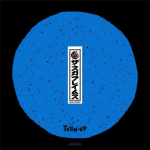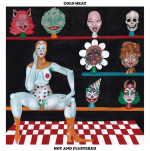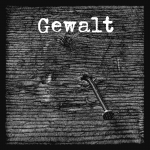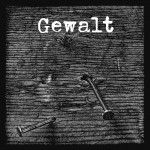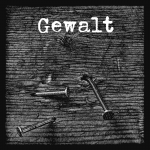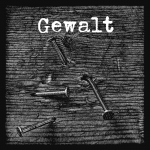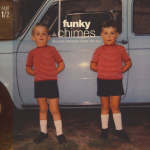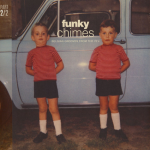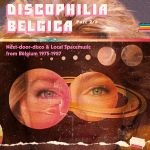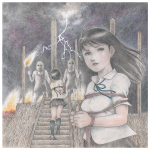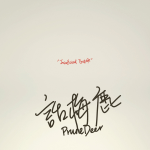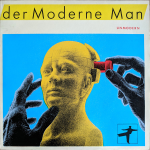Katalog
Tipps
- 01. Dig
02. Bad Disease
03. Taste
04. Ostentatious
05. Pea
06. Do It Right Now
07. No Fun On The Beaches
08. IntroSTIFF RICHARDS
Dig
[engl] STIFF RICHARDS are 5 blokes from Melbourne playing tunes "straight from the shed straight to your head...". Those blokes are called Lochie, Mawson, Raf, Gaz and Wolfie and they're just the latest in a growing number of Aussie punk bands to feature on here. If you're a fan of balls out rock n roll then Oz is where you should cast your gaze. Melbourne scuzzy punk rock band who have created a buzz about town with this admittedly EXCELLENT slice of raw rock & roll which doesn't let up for a second over its all-too-brief duration. Totally A-grade Aussie punk rock. There's nothing fancy going on here: just raw, savage rock n' roll that kicks you straight in the teeth and comes back for more. These gentlemen have definitely absorbed the lessons of the Detroit and Aussie rock of yore, and they manage to invigorate that sonic tradition with an energy that's off the charts. You've got guitars firing at full fury, a punishing rhythm section, and a madman howler on lead vocals who probably literally spits fire. "Do It Right Now" may be as blatant of a Stooges homage as you'll ever hear, but it's also one of the best. Play it at max volume, and you will feel indestructible! And while Stiff Richards are especially satisfying in short, fire-hot doses ("Bad Disease", "Ostentatious"), they sound no less thumping in full-on heavy rock mode. "Dig", which delivers monster riffs and transcendent maniacal screaming from deep within Wolfy's loins, opens the album with a proverbial bang. "PEA", with its call to arms of "Power! Energy! Action!", might as well be Stiff Richards' theme song. It's always a cliche to credit a band with capturing a "live" energy in the studio. But if Dig sounded any more live, you would be able to smell the sweat and spilled beer. These guys play every note like they're trying to blow the roof off of the joint. Something tells me they've succeeded on more than one occasion. A ripper. Short, sharp, intense and fun this LP is in heavy rotation- like a moon around jupiter.- Format
- LP
- Release-Datum
- 08.05.2020
- EAN
- EAN 4260016924547
- Format
- LP
- Release-Datum
- 08.05.2020
- EAN
- EAN 4260016924547
- 01. Strange Things
02. I'll Never Stop
03. A Place In Your Heart
04. Night Of Action
05. You Don't Know Me
06. Look Out Johnny
07. I Can Only Dream
08. Forever
09. Don't Ring Me Up
10. Smile And Say Goodbye
11. Private Lives
12. Strange ObsessionsPROTEX
Strange Obsessions
[engl] Reissue of the 2010 release on Sing Sing Records, NYC, USA. This is the first album of PROTEX, recorded in 1979-1980 for a release on Polydor records, but the record never came out because the label was interested in the next big thing, after punk rock.... The guys from Sing Sing Records unearthed this masterpiece and put it out in 2010, it was sold out and OOP soon afterwards. So nearly 10 years after you have the possibility to buy this classic for a normal price. The Bachelor Records release of "Strange Obsessions" is not only a simple repress, we managed to improve the sound and speed, thanks to Eric Brady, PLUS the artwork was changed a bit too!- Format
- LP
- Release-Datum
- 03.12.2019
- EAN
- EAN 4260016924585
- 01. Harold Berty - Django
02. Ti L'Afrique - Pop Soul Sega
03. Claudio Veeraragoo - Qui fine arrivé
04. Paul Labonne – Ti Malgache Ti Madras
05. Georges Gabriel – Pop Séga
06. The Features Of Life – Soul Sabattah
07. Roland Fatime – S.I.L.V.I.E
08. Jean Claude Gaspard - Machin Sex
09. Jos Henri - Apolo pop 76
10. Coulouce – Beau-Père
11. John Kenneth Nelson – Change to Manière / Missié Coutou No2
12. Lelou Menwar - Capito
13. Daniel Delord - MariaV/A
MORIS ZEKLER - Fuzz & Soul Sega from 70's Mauritius
[engl] A tax haven and dream destination for wealthy travelers, the Republic of Mauritius is a multi-ethnic country that is currently experiencing full economic and social ascension. Banking, textile, tech, tourism industries… in this fast-paced melting pot, business is strong. But not too far from the heavenly beaches and luxurious hotels are quasi-shantytowns, reminding us that a large part of the population, often Creole (of Afro-Malagasy origin) are still excluded from the "economic miracle of Mauritius." These Creoles are mostly descendants of slaves who were deported in mass in the eighteenth and nineteenth centuries from Madagascar and the East African coast for the cultivation of spices and coffee and later sugar cane. On the margins of these hellish plantations was secretly created a music called tchiega, chéga or tsiega, a distant cousin of the blues. The music from Mauritius in the 70s found on this compilation naturally evolved from this original sega. Created at the crossroads of Afro-Malagasy, Western and Indian cultures, pop, soul and funk arrangements, syncopated ternary polyrhythms, saturated guitars, psychedelic organs and Creole vocals, this musical phenomenon is as incredible as a tropical flower in bloom. The Mascarene Archipelago, located in the South Western part of the Indian Ocean includes the islands of Reunion, Mauritius and Rodrigues. Unsullied of human settlement up until 500 years ago, these islands are home to a unique flora and fauna, including the famous dodo, emblem of Mauritius, giant tortoises and the flying fox, a large bat that thrives mostly on raw fruits. Dutch, French and English settlers started trading slaves in Mauritius leading to French King Louis XIV’s terrible ‘code noir’ which was finally abolished in 1835. Followed by the era of commitment, often described as disguised slavery during which hundreds of thousands of contract workers immigrated from India and South-East Asia to provide much needed labor in the plantation system for the widespread cultivation of sugar cane. Although the origins of sega remain quite unknown, we do know that it contains vocal and percussive practices that originated from Madagascar, Mozambique and East Africa. A social escape and a space for improvisation, satire and verbal jousting, it transcended everyday life and made room for the expression of conflicts and the transgression of taboos. Inseparable from dance, sega is thus exposed as part of a pair: bodies brush against each other, stare at each other, get excited but never touch each other. The main instrument of sega is the ravanne, a large tambourine-like drum made of a large wooden frame and goat skin. It is accompanied by the maravanne, a rectangular rattle filled with seeds, and also often by a triangle, a bottle, a machete or any metal object that can be hit with a stick. The practice of sega also exists in a ritual and mystical form, forgotten in Mauritius, but still present in Reunion where it creates impressive trances during the "servis malgas”, cults dedicated to ancestors. Songs of sailors, romances from ancient France, Breton folk traditions, and of course the many rhythmic and melodic contributions from India have certainly influenced sega. The fashionable European ballroom dances (quadrille, scottish, waltz, polka, mazurka) were introduced by the bourgeois circles, then appropriated by the Creole populations who used the repertoires and instruments (violins, mandolins, pianos) to create a first fusion of the genre called "sega salon". Jean Alphonse Ravatton also called "Ti Frère" (little brother) is considered to be the "missing link" between the original sega and modernity. Born in Quartier Militaire (Military Quarter) in 1900, he learns sega from his father, a singer and organizer of "bobèche balls" lit by oil lamps and "rann zariko balls" where a bean hidden in a cake determines who will organize the next party. A fabulous improviser, "Ti Frère" sung about impossible loves, marital quarrels, social misery, alcoholism and violence with his hoarse voice. He was the inspiration for future generations of segatiers. His song "Tamassa", pressed on a 78-inch vinyl in rudimentary conditions by the Damoo pressing plant, a pioneer of phonographic production in Mauritius, was his first local recording. Fanfan the sega storyteller, "Captain" Michel Legris, the Cassambo family or the fisherman and healer Nelzir Ventre de Poudre d'Or (golden powder belly) are all singular figures of the “typical” sega who preserved the Afro-Malagasy cultural heritage and influenced modern sega. Now celebrated as an emblem of Mauritius, sega long remained disdained and banned in its early days by the colonial administration who feared revolts and slave gatherings. The high society then despised this music of "dark tcholos", calling it grotesque, rowdy and repetitive, while the Catholic missionaries denounced the sega dance, considering it to be licentious and depraved. It is only from the 50s onward that the style came out of the shadows. The Mauritian soldiers who fought alongside the English in the Second World War brought along guitars, banjos and accordions. The first orchestral ensembles such as the Typhoon Band, the Police Orchestra or the Pepitos took over fairs and movie theaters. A generation of popular singers emerged with Roger Augustin, Jacques Cantin, France Jemon, Francis Salomon and the famous Serge Lebrasse, who had much to do with the democratization of sega thanks to the enormous success of his first song "Madame Eugene" in 1959. The single was produced by John Venpin on "Dragons", a small label that put a mark on the 60s and 70s with its continuous production of 45-inch vinyls, following in the footsteps of Michel Foo Fat’s ‘Neptune’ and Henri Ah Koon’s ‘Do Re Mi’, other pressing houses run by Chinese merchants. The emerging tourism industry approached sega as an added value and a guarantee of authenticity. The orchestras started playing their segas in hotels among all kinds of other musical varieties and international hits. This was also around the time of the creation of Mauritian TV and sega programs such as the "Star Show" presented by the excellent keyboard player Gerard Cimiotti, who launched many singers’ careers. Cimiotti is part of a handful of genius arrangers who, over the course of two decades, propelled sega. The most prolific and surprising of them is undoubtedly Marclaine Antoine, a talented self-taught guitarist and multi-instrumentalist, producer and arranger who composed hundreds of singles for a number of singers: "They would come see me with a song composed of two or three chords on the ravanne" he remembers "I would offer arrangements that we would record with my orchestra, often just voice, bass, rhythm guitar and drums because we only had a 4-track recorder at the time. I would then go to Reunion to re-record the tracks with percussion, chorus, guitar solos, keyboards etc... The records were then pressed in Madagascar at De Comarmond". In 1959, Raoul De Comarmond and his son Jean-François had set up the first 78-inch pressing plant in the Indian Ocean in wild conditions. In addition to funding many labels and pressing most of the singles from Reunion, Mauritius, and Madagascar in the 60s , they went on to produce nearly 5000 references over 20 years. The singer Claudio Veeraragoo, after debuting in the styles of variety and bollywood, became the first Indian-born segatier but also one of the pioneers of rock sounds and saturated guitars in Mauritius. A fan of Santana, Jimmy Hendrix and the Shadows, he recorded the incredible "Qui Fine Arrivé" in 1971, a sorrowful love song melded with a canvas of sharp riffs played by James Furcy. The band was called "les Copains" before becoming "Satanik" or the "Satanik Group". Claudio made a strong impact with his segas inspired by Bollywood and Qawwali, then with his hit "Ambalaba" covered by Le Forestier, which made him internationally known as one of the biggest stars in Mauritius. In his famous session from 1971, Harold Berty, another singer of Indian origin, recorded his first 45" from which came the song "Django", an ode to the famous pistolero from the eponymous western spaghetti. "Mo'nn tir sa kou revolver ek mo labouss" he recalls: the effect of the pistol and the whistling bullet is simulated by his own voice. Another iconic figure, the segatier from Rose-Hill, Jean-Claude Gaspard son of Roger Augustin started out playing guitar for the Yankees, Serge Lebrasse’s orchestra, before becoming one of the most famous singers from the Indian Ocean with a local and international career that spanned over 40 years. A prolific composer and a talented chronicler of everyday life, he is known for his humorous two-sided sega. Puns, irony and sexual allusions are all an integral part of the style. A specialist of this aspect, the singer Coulouce (Jean Pierre Mohabeer) was censored by the Mauritian radio before sinking into alcoholism and dying, like many artists of his generation, in misery and indifference. A few months after the independence of 1968, a gang war began in Port Louis, drifting into violent racial riots. Followed by the birth of the MMM (Mouvement Militant Mauricien) which, inspired by Frantz Fanon and May 68, offered to replace race struggle by class struggle. This marks the beginning of the years of embers, 10 years of strikes, police repression, student revolts and states of emergency. This was a decade of profound cultural change revealing the turbulent multiethnic Mauritian identity. The emblematic movement of the "santeé engazé", which mixed Indian music, sega and progressive militancy, appeared with Siven Chinien, Grup Latanier and the Soley Ruz band which brought together Bam Cuttayen, Rosemay Nelson, Micheline Virahsawmy, Nitish and Ram Joganah, Lélou Menwar and Eric Nelson. The latter, a solo guitarist and arranger, set up the "Features Of Life" which, in the mid 70's, gave birth to a new sound. Fuzzy distorted guitars and funky beats invite each other to play over the unbridled ternary beats created by fabulous drummer Raoul Lacariate, brother of singers Micheline Virahsawmy and Rosemay Nelson, a cursed genius who tragically vanished way to early. The band accompanied a new wave of singers, including the atypical Joseph Roland Fatime aka Ti L’Afrique, a hyperbolic and hyperactive character, a fan of blues and James Brown who launched an explosive raw, and funky style of sega. Originally from Plaine Verte, an Arab neighborhood of Port Louis and born in a family of kawwal singers, he became a segatier, political activist, masseur in hotels, host at Club Med, and even a pastor and sports coach! During the 70's, his bad boy reputation preceded him. Now a repentant, he leads peaceful days in the suburbs of Port Louis. In his wake is Joss Henri, who played guitar in the Caméléons alongside Alain Peters, Daniel Delord ambassador of Seychellois music in Mauritius and the excellent Georges Gabriel. Eric Nelson's brother, John Kenneth, stands out as one of the island's most original voices, with his energetic and abrasive style. His song Missieé Coutou, unsuccessfully covered by French singer Carlos, was a hit in the Indian Ocean. Although less known, his first single reissued on this comp is equally brilliant. With the arrival of cassette tapes, the 80s marked the death of vinyl: many record companies went bankrupt when faced by cassette copies that flooded the market. The role of arrangers who directed bands and supervised recordings disappeared. Speaker systems and DJs replaced the bands that provided entertainment for balls and weddings, confining them to hotels and official ceremonies. Sega underwent a stylistic and melodic impoverishment, accentuated with the advent of computers and the standardization of productions. The style of seggae, a mix of reggae and sega emerged with Joseph Reginald Topize aka Kaya, whose death in jail in troubling circumstances in February 1999 caused historic riots and several deaths. The percussionist and singer Stéphano Honoré, better known as Lélou Ménwar, started out alongside Marclaine Antoine one of the major creators of seggae, then went on to develop his own style, the sagaï, influenced by sega typik, maloya from Reunion, blues and funk. To this day, he remains one of the most surprising artists of the 90s and 2000s. One of the few who has managed to transform the sega saga into an ever more personal and original direction.- Format
- LP
- Release-Datum
- 14.04.2020
- EAN
- EAN 3521381560152
- Format
- CD
- Release-Datum
- 14.04.2020
- EAN
- EAN 3521383460146
- 01. Les Masques - Il faut tenir (1969)
02. Isabelle Aubret - Casa Forte (1971)
03. Christianne Legrand - HLM et Ciné Roman (1972)
04. Jean Constantin - Pas tant d'chichi ponpon (1972)
05. Billy Nencioli & Baden Powell - Si rien ne va (1969)
06. Marpessa Dawn - Le petit Cuica (1963)
07. Jean-Pierre Sabar - Vai Vai (1974)
08. Sophia Loren - De jour en jour (1963)
09. Isabelle - Jusqu’à la tombée du jour (1969)
10. Sylvia Fels - Corto Maltesse (1974)
11. Frank gérard - Comme une samba (1972)
12. Ann Sorel - La poupée des Favellas (1971)
13. Charles Level - Un enfant café au lait (1971)
14. Andrea Parisy - Les mains qui font du bien (1970)
15. Audrey Arno - Quand Jean-Paul rentrera (1969)
16. Aldo Frank - T’as vu ce printemps (1970)
17. Christianne Legrand - Cent mille poissons dans ton filet (1972)
18. Clarinha - Lemenja (1970)
19. Hit Parade des Enfants - Aquarela (1976)
20. Jean-Pierre Lang - Tendresse (1965)
21. Magalie Noël - Une énorme Samba (1970)
22. Françoise Legrand - La LuneV/A
TCHIC TCHIC - French Bossa Nova - 1963/1974
[engl] Ever since the late 1950s bossa-nova revolution, Brazil’s influence on French music has been undeniable. Pierre Barouh, Georges Moustaki and a vast array of lesser known artists, all made the Musica Popular Brasileira (MPB) an axis of promotion at the service of a cool and metaphysical, modern and mixed Brazilian lifestyle. Some were seduced by the poetic languors of the bossa, some were looking for fun, and others just loved the American hybridization of jazz-bossa, jazz-samba. What is bossa nova? One of its creators, Joao Gilberto said: "Its style, cadence, everything is samba. At the very start, we didn't call it bossa nova, we sang a little samba made up of a single note - Samba de uma nota so .... The discussion around the origins of bossa nova is therefore useless”. It is nevertheless useful to remember that these magnificent Brazilian songs, which the guitarist describes as samba, were shifted and balanced around improbable chords. "I like things that lean, the in-betweens that limp with grace," said Pierre Barrouh, quoting Jean Cocteau. With emotion, arrangements for violin and supple guitar licks, bossa nova rapidly changed. A transformation that can be heard in the Tchic, tchic, French Bossa Nova 1963-1974 compilation, the result of a cultural reappropriation, which traveled through the United States and supplemented itself in France. A musical revolution that has remained significant, bossa nova was born in Rio. From 1956 to 1961, Brazil lived through its golden years. In five years, the country had invented its modernist style. Elected president in 1956, Juscelino Kubitschek de Oliveira, an elegant man with a broad forehead, brandished a promising slogan: "Fifty years of progress in five years". He quickly got to work. Not worried about increasing debt, he launched the project for a new federal capital, Brasilia, designed by the communist architect Oscar Niemeyer. Volkswagen opened state-of-the-art factories and created the “fusquinha”, the Beetle. In Rio, the Vespa made its first appearance. The Arpoador Surf Club crew run into the “girl” from Ipanema, Helô Pinheiro - the tanned garota ("chick"), between a flower and mermaid, who at 17 walked by the Veloso bar, where the fiery author and composer, Tom Jobim and Vinicius de Moraes, were getting drunk on whiskey. From then on, bossa symbolized cool. In 1958, Joao Gilberto recorded Chega de Saudade, which the directors of Philips denied, calling it "music for fagots". The marketing director, who believed in it, secretly pressed 3000 78-inch vinyls and distributed them at schools around Rio, creating a tidal wave. American jazzmen then took over. In particular, trumpeter Dizzy Gillespie and guitarist Charlie Byrd. In November 1962, the Brazilian Ministry of Foreign Affairs funded a "Bossa-Nova" concert at Carnegie Hall in New York, inviting the genre’s pioneers. Unprepared, the show soon turned to disaster. But the troupe was invited to the White House by Jackie Kennedy. The first lady loved "the new beat" and in particular Maria Ninguem, a song by Carlos Lyra, later covered by Brigitte Bardot. In Brazil, the 1964 military coup quickly ended this euphoria. The destructive atmosphere that ensued pushed many Brazilian musicians to leave, if not to exile. Thus, Tom Jobim, Sergio Mendes and Joao Gilberto arrived to the United States. In New York, Joao Gilberto met saxophonist Stan Getz. At the time, he was married to the Bahianese Astrud Weinert Gilberto, who had a German father. She had never sung before, but she knew how to speak English. Getz therefore asked her to replace her husband on The Girl From Ipanema. The Getz/Gilberto record with Tom Jobim on piano, was released in March 1964. Phil Ramone, the "pope of pop" was in charge of sound. Bossa nova arrived in Paris through the classic “guitar-voice” channel (Pierre Barouh, Baden Powell, Moustaki…) But France loved jazz and Paris had already welcomed its American contributors. All these good people were to pass through Saint-Germain-des-Prés. The cabaret l'Escale became the Mecca of Latin American sound where one could find Pierre Barrouh and his friends, such as the Camara Trio, samba-jazz aces, whose only record was published by the Saravah label. With a band strangely called Les Masques (a band that included Nicole Croisille and Pierre Vassiliu, among others), the Camara Trio recorded an interesting Brazilian Sound, including the track Il faut tenir which is present on this tasty compilation of rarities. Other enlightened musicians can also be found on the compilation, such as Jean-Pierre Sabar (songwriter for Hardy, Auffray, Leforestier ...) and the French pop rock organist Balthazar. In 1975, Sabar recorded Aurinkoinen Musiikkimatka on a Finnish label, which featured the crazy Vai, Vai, included on this record. We are now following the footsteps of Brazilian electronic musicians such as Sergio Mendes, Eumir Deodato or Marcos Valle who created funk and disco sounds on their keyboards and synthesizers. A style that influenced Véronique Sanson when she wrote Jusqu’à la Tombée de la nuit in 1969 for Isabelle de Funès, the niece of Louis and a great friend of Michel Berger - Sanson did end up singing this track on her 1992 Sans Regret record. The pinnacle of exoticism and travel, Sylvia Fels’ Corto Maltese includes bongos, sea mist and ocean sounds. The title was taken from Jacky Chalard’s concept album written in 1974, Je suis vivant, mais j’ai peur (I am alive, but I am scared), based on Gilbert Deflez’s science fiction novel. However, bossa nova extended the scope of popularity. "In the 1970s, I was a fan of Sergio Mendes, Getz / Gilberto. I fell in love with this music that I knew because I had been an orchestral singer, " explained Isabelle Aubret, who in 1971 delivered a composite record of covers by the very funky Jorge Ben, Orfeu Negro, Tom Jobim, Vinicius de Morais and Jean Ferrat. "I recorded this album for Meys Records in Paris, far from Brazil, with wonderful musicians, François Raubert, Roland Vincent, Alain Goraguer...". The latter wrote the arrangements for Casa Forte, a very percussive title borrowed from Edu Lobo, one of the initiators of the bossa who spent time in California. "Jazz and bossa came together and produced very rhythmic music. I love singing, it allows me to dream, to have fun, to feel a high on stage, and these songs brought me joy, made me swing, my singing felt like a dance.” The world tours of French singers and their desire for the tropics, often brought them to Rio with its hills, forests, caipirinhas and tanned bodies. There are surprises though, like this Iemenja (Iemenja is the goddess of the sea in the Afro-Brazilian candomblé religion). Not unlike the composer and musician Jean-Pierre Lang, based in Sao Paulo, Claire Chevalier taught Brazil to Brazil. In 1970, the singer and painter published a 45-inch vinyl, Mon mari et mes amants (My husband and my lovers), under the improbable pseudonym of Clarinha (little Claire). She was then living in Rio, with her husband, Joël Leibovitz, who founded a band called Azimuth, and who owned a record label specialized in "sambas enredos" songs for samba school parades. For its B side, she asked Pierre Perret to come up with lyrics for a song composed by Carlos Imperial: "Oh goddess of the sea, o goddess Iemenja, I bring a white rose to adorn your long hair ..." . "Perret came to see us, and we had fun, remembers Joël Leibovitz. We wrote Lemenja for fun, we recorded it at the Havaí studio, behind the Central do Brasil [ the central station]. Erlon Chaves, the arranger who worked with Elis Regina, joined us" adding his share of Afro-Brazilian percussions and funky brass to the mix. There is a common misunderstanding in Franco-Brazilian history: that bossa, admittedly hedonistic, is perceived as funny, even though the poets who wrote the texts are often philosophizing on the human condition. Its French interpreters pull it towards a carnival inspired universe, far removed from its fundamental essence. Thus, Jean Constantin covered the famous Samba da minha terra, an ode to the art of samba written by the classic Bahian composer Dorival Caymmi, renaming it with the enticing title of Pas tant de tchi tchi pompon: "On your pier there is no tchi tchi / when you arch your back, you know everything is alright ”(lyrics by Gérard Calvi). This expedited bossa aims for the absurd, but retains a certain elegance. Indeed, Jean Constantin was not an idiot, the rather large man had a huge mustache and liked fantasy, (Les pantoufles à papa, Le pacha, inspired by cha-cha-cha-cha, salsa and jazz) but he was also the lyricist of Mon manège à moi interpreted by Edith Piaf, the composer of Mon Truc en plume by Zizi Jeanmaire and the soundtrack of François Truffaut’s 400 Blows. Le Poulpe, published in 1970, from which this bossa is extract, was arranged by Jean-Claude Vannier, an accomplice of Serge Gainsbourg’s Melody Nelson. In short: "There is enough of samba / By looking at the parasol / Because my poor cabeza / Is going to die in the sun". Even the American actress Marpessa Down, who was at the heart of the bossa nova revolution with her role as Euridyce in Marcel Camus’ film Orfeu Negro, winner of the 1959 Cannes Palme d'or, fed the clichée with Je voudrais parler au petit cuica - "Tell me how you manage to always make people want to dance / It's true, I must admit that I cannot resist your magic" - in consequence, once can hear the cuica, a little drum inherited from the Bantu. But bossa nova had many angles. Societal, of course, pushing actresses who were symbols of women's liberation like Brigitte Bardot, Jeanne Moreau, or Sophia Loren to engage in the exercise of accelerated bossa. In February of 1963, Sophia Loren made a record in French in Rome, Je ne t'aime plus, featuring the song De jour en jour, a bossa written by two Italians, Armando Trovajoli and Tino Fornai, which was released a little later by Barclay. Bossa accompanied the 1960s, a decade of moral liberation. Ann Sorel, who interpreted La Poupée des favellas, caused a sensation with L’amour à plusieurs, a provocative song written by Frédéric Bottom and Jean-Claude Vannier. As for the actress Andrea Parisy, she displayed her bourgeois cheekiness in Marcel Carné's Les Tricheurs before interpreting Les mains qui font du bien. And Magalie Noël, the friend of Boris Vian, who sung Johnny fais-moi mal, was hired to sing Une énorme Samba, composed by Alain Goraguer (arranger to Gainsbourg, Bobby Lapointe and Jean Ferrat) with lyrics by Frédéric Botton. But in the end, of what wood is bossa nova made of? The answer is given by Christianne Legrand, daughter of Raymond the conductor, and sister to Michel the composer: "With me, with jà" - jà means "immediately" in Portuguese. In 1972, the singer, an expert in vocal jazz and a member of the Double Six, published Le Brésil de Christianne Legrand. Two songs included on the Tchic Tchic compilation that demonstrate how bossa, jazz, funk, rock, etc. work like a swiss army knife: the music is used to denounce broken systems, or miracles, HLM et ciné roman, Cent mille poissons dans ton filet, two songs from the O Cafona soundtrack, a successful telenovela broadcast, at the time in black and white, on TV Globo. The first was adapted in French by the fighter and friend of the Legrand tribe, Agnès Varda. The second is content with a play on words, jostling them into a summer fun.- Format
- LP
- Release-Datum
- 17.07.2020
- EAN
- EAN 3521381559965
- Format
- CD
- Release-Datum
- 14.04.2020
- EAN
- EAN 3521383459959
- 01. Vis-a-Vis
02. Listening
03. Exposure
04. What Is Compassion
05. Aujourd'hui
06. Bayonet
07. It's Mutual
08. How Many Duchesses
09. I Came Alive
10. We've Been DisappearingSAVAK
Rotting Teeth in the Horse's Mouth
[engl] Savak are back with their fourth album, "Rotting Teeth in the Horse’s Mouth". The band recorded the album at their Gowanus studio and the record features appearances by Scott McCloud (Girls Against Boys, Soulside, Paramount Styles), Michael Hampton (The Faith, Embrace, S.O.A., One Last Wish, Fake Names), and Anthony Roman (Radio 4). The band was formed in 2015 by members of The Obits, Holy Fuck, Edsel, Nation of Ulysses, and The Cops. Their influences range from '60s Texas psychedelia to British pub rock to early-'80s American hardcore. Savak is Sohrab Habibion, Michael Jaworski and Matt Schulz. It comes on solid white vinyl. This is a co-release with Ernest Jenning Record Co. from Brooklyn, NY.- Format
- LP
- Release-Datum
- 10.04.2020
- EAN
- EAN 600064797610
- 01. There Is No Year
02. Dispossession
03. Hour Of The Furnaces
04. Losing Is Yours
05. Unoccupied
06. Chaka
07. Wait For The Sound
08. Repeating Night
09. We Can't Be Found
10. Nothing BloomedALGIERS
There Is No Year
Punk meets Soul: Algiers übertreffen sich auf dem 3. Album selbst. Die aus Atlanta stammende Industrial-Soul-Urgewalt Algiers veröffentlicht am 17.01.20 ihr drittes Album "There Is No Year". Die Band, die mittlerweile nicht nur gesangstechnisch zu einer starken Stimme geworden ist, hatte bereits im September mit dem Non-Album-Track "Can The Sub Bass Speak?" ein viel diskutiertes und meinungsstarkes Slam-Poetry Stück aufhören lassen , dem nun ein nicht minder pointierter Nachfolger folgt.àDas zweite Album "The Underside Of Power" von 2017 hatte der Band bei Publikum wie Kritikern zum endgültigen Durchbruch verholfen. Fast zwei Jahre tourten Franklin James Fisher, Lee Tesche, Ryan Mahan und Matt Tong (Ex-Bloc Party) um den kompletten Erdball und spielten u.a. als Support von Depeche Mode in ausverkauften Stadien. Der dringliche Sound von Algiers klingt auf dem neuen Album noch etwas fiebriger als auf den Vorgängern. Während Sänger und Multiinstrumentalist Franklin James Fisher seine geschliffenen Lyrics von der Kanzel herab predigt, ist der wummernde Synthesizer der nervöse Puls, um den herum der unverwechselbare Klang der Band kreist - angetrieben von der Rhythmussektion um Matt Tong und Ryan Mahan.àZiel war es mit dem dritten Album ein neues Level zu erreichen. Dafür holte man sich die Produzenten Randall Dunn (Sunn O))) und Ben Greenberg ins Studio, um dem futuristischen Post-Punk-R&B eine neue Textur verpassen. Industrial-Sound geladene Klangwelten, die an Scott Walker in seiner 4AD-Ära oder Iggy Pops und Bowies Berlin Phase erinnern, treffen auf eine Synthese aus Marvin Gaye und Fever Ray.- Format
- LP
- Release-Datum
- 17.01.2020
- EAN
- EAN 744861143901
- 01. Yanigawa Blues (12 Inch Version)
02. My Little Suede Shoes
03. Draw The Line (12 Inch Version)
04. Kanchana
05. El Camino
06. Cat And Dogs
07. Oh Babies
08. Ocean Liner
09. Whisky And SodaSKA FLAMES
Turn-up
[engl] 1985 in Tokyo, the Japanese ska scene saw the dawn of a new era when Ska Flames run into the circuit. Back then there wasn't even a club scene, although the city had some ska hot dances where live music was happening and DJs were playing out their gems. In fact that was the only place in Japan where you can buy or even listen to the Jamaican ska music. Those ska musicians and DJs were seen as cool and hip players causing this movement by drowning themselves into the Skatalites records. That's when an English gentleman, goes under the name of Gaz Mayall, who discovered the Ska Flames while his visit in Japan. The band released their first album "Ska Fever" for Gaz Rockin' Blues in 1989, successfully debuting the London gig the same year spreading their name across the globe. What's interesting is their song titles, "Samurai", "Kurosawa" and even "Hot Sake". They are all seemingly named by Gaz who perhaps felt the Japanese romance to their music. The Ska Flames indeed is a band that deserves it all. The Ska Flames music is unconventional - like if they only play what they felt the best ska at times. It's manly, but rich in variety and humorous at the same time. Their first single "Tokyo Shot" sounds miraculously refined like Showa pops. When you talk about the live shows of the Ska Flames, it's like a Japanese local festival. Full of atmosphere and good vibes. Every band member stands on the stage like bosses, confidence would be the only word that can explain their presence. Legendary, it is also known that their gigs sell more booze than anyone else's. In 1989, when the Skatalies and Prince Buster toured Japan, the Ska Flames represented the Japanese ska scene receiving applause from every punter. Since then, they played the same roll supporting other Jamaican legends at numeros occasions, acting as a bridge between the two countries. It's been over thirty years since the beginning, meanwhile the Japanese ska scene has strongly been established and is as bold as ever. We cannot measure how much contribution the founding members such as Kenji Miyazaki, Koji Ise, Akihito Nakasu, Seiichi Nagai, Toru Shibagaki and Kei Miyanaga, as well as the next generation Michihisa Ishii, Kei Mizorogi, Jin Shimura and Naoki Tanaka have rendered to the Japanese music. The Ska Flames have been and will always be leading the Japanese ska music spreading the good vibes all around. Right about now, I would like to present this stunning album to all the great musicians of Jamaica and no other than Prince Buster. Naoki Ienaga (Dub Store Records)- Format
- LP
- Release-Datum
- 01.10.2016
- 01. Piscies Crisies
02. Industry Sleaze
03. Women's Work
04. Bad Mood
05. Cinematic Fashion
06. Squirm
07. Beach Photography
08. ZZ Top Hat
09. Manic Mechanic
10. CrawlersCOLD MEAT
Hot and Flustered
[engl] “Agh! A fresh chop from the large dusty burning murder island: Cold is the Meat to beat. Perth’s finest flesh purveyors have upped their naughty game here across ten tracks of gleefully haughty punk. Hot and Flustered is somehow at once extremely camp and deadly serious. Ashley’s vengeful, elastic rasp smears menses down the screwfaces of vacuous tastemakers, climate change deniers, perennial street perverts, and of course, ZZ top fans. There’s some surprisingly poignant forays into melody (Beach Photography) and a good grip of sudden tempo fuckery to keep us well and truly hooked. Their signature chubby and defiant riffs under snarky bouncing toms formula extends well to the album form, creating a timely reminder that hate and fear are more than reasonable responses to our hell predicament. Let’s take comfort in collective ridicule. When it’s too hot to pogo because the sky is on fire, Cold Meat will let us writhe around in the dirt like the little piggies we are.” (Bryony Beynon) Well, after a slew of 7” offerings, Perth’s Cold Meat have finally hit us with a full length record. Much like their last few releases they’ve taken an amped up approach to 70s PUNK but this time round they offer ever so slightly more diversity. Ten tracks clocking in at just over 23 minutes and cut at 45rpm for maximum volume. Get hot and flustered.- Format
- LP
- Release-Datum
- 20.03.2020
- EAN
- EAN 5060446124031
- 01. Dog Food Five - Gotta Get Outta Here
02. Pisse - Alt Sein
03. Lo Fat Orchestra - What Am I Doin Here
04. Hara Kee Rees - When You Come Home
05. Renaud Picard - Walking With Udo
06. Sick Hyenas - Moskito
07. Ryker's - Young Heart
08. Alte Sau - Der Kreis Ist Leer
09. William Honda - The Dirt
10. JaKo?ingJa - Das Schwein Hat Hände
11. Fizzis - Cab Driver
12. Cellophane Suckers - Save My Soul
13. Einkauf Aktuell - Requiem
14. Counts On Crack - Reruns
15. King Khan & The Shrines - Empoisonneuse
16. Gee Strings - Punk Rock Heart
17. Sick Teeth - Gummi Overkill
18. Aui & Zween - Kaese
19. IIIiTanten - Ehrenamt Udo
20. Catch As Catch Can - Blurred Lines
21. Egotronic - Gewalt
22. The Crimes - Get Up An Be There
23. The Hipriests - Need You
24. Klaus Johann Grobe - Rote Sonne
25. Old Seed - Hopes And Dreams
26. Dead Moon - A Miss Of You
limitiert auf 1000 Stück // Songs teilweise unveröffentlichtV/A
Ja, weiter geht's im Programm!
Es gibt Platten, über die möchte man eigentlich keine Texte schreiben, weil jedes Wort schmerzt und Wunden aufreißt. Eine dieser Platten ist "Ja, weiter geht’s im Programm”, denn diese Platte ist eine Danksagung an Udo Schulze, leidenschaftlicher Konzertveranstalter, Kneipier, DJ, Schlenderer und Freund. Erschienen auf Udo’s Label Kunta Kinte Records, zusammengetragen von Weggefährten, Künstlern und Musikern. Müsste man ein Wahrzeichen neben dem Herkules für Kassel benennen, wäre es wohl die “Mutter”, stand in einem subkulturellen Begleitheft zur documenta. Und keine Person prägte diese Spelunke so wie Udo. Ausgangs- und Endpunkt für einen kulturellen Mikrokosmos der sich nicht nur auf die Kasseler Nordstadt beschränkte, aber hier ein Biotop vorfand, welches einzigartig in Deutschland, vielleicht auf der ganzen Welt war und ist. Udo war einer der Personen, der dieses Biotop mit seiner eigenen Art hegte, pflegte und prägte, Leute für neue Musik begeisterte und jetzt nach seinem viel zu frühen Tod schmerzlich vermisst wird. Vielleicht hilft diese Platte, denen die trauern Trost zu spenden und vielleicht denen, die Udo nicht kannten, zu verstehen, wir groß und wichtig Subkultur und kulturelle Vielfalt ist. In tiefer Liebe an einen besonderen Menschen. Wir danken dir für alles, Udo. Mach es gut, alter Freund. Nachtrag: Mit dem Gewinn dieser Platte werden in Udo's Sinne kulturellen Projekte in Kassel unterstützt.- Format
- DoLP + Book
- Release-Datum
- 14.06.2019
- EAN
- EAN 4260016924264
- 01. Limiter
02. VerheimlichungGEWALT
Limiter // Verheimlichung 1te Vers.
Man kann es drehen und wenden wie man will. Gewalt haben es geschafft, 2017 mit der Weiterentwicklung von Noiserock eine der innovativsten, deutschen Bands zu sein. Sound, Sprache, Live-Performance, Reflexion, es entsteht alles aus einer Eruption und vermittelt aus diesem Grund auch eine Ganzheitlichkeit die man ansonsten selten findet. Vielleicht auch deswegen die Bandentscheidung, einen Teil des Weges mit Sounds of Subterrania zu gehen. Das Thema der fünften Gewalt Single beschäftigt sich mit der Verdichtung der Unmöglichkeit und Unentrinnbarkeit unserer Existenz. Genau zwei Stichpunkte gibt Gewalt zum Verständnis. Punkt eins betrifft Verheimlichung: „Können wir unsere Einsamkeit überwinden? Wenn ja, scheint der Preis dafür der zu sein, sich füreinander zurechtzustutzen. Wir sind nicht in der Lage, uns zu sehen und wir sind nicht in der Lage, unsere utopische Version von uns wahrzunehmen. Wir lieben auf unterstem Niveau.“ Punkt zwei Limiter: „Wir kommen als Genies auf die Welt und verlassen sie als Idioten (Holger Czukay)“ Für die Ritzung des Artworks und die Vervielfältigung mittels Siebdruck gebührt Philip von Janta Island ein großer Dank.- Format
- 7" lim
- Release-Datum
- 01.12.2017
- EAN
- EAN 4260016921669
- 01. Limiter
02. VerheimlichungGEWALT
Limiter // Verheimlichung 2te Vers.
Man kann es drehen und wenden wie man will. Gewalt haben es geschafft, 2017 mit der Weiterentwicklung von Noiserock eine der innovativsten, deutschen Bands zu sein. Sound, Sprache, Live-Performance, Reflexion, es entsteht alles aus einer Eruption und vermittelt aus diesem Grund auch eine Ganzheitlichkeit die man ansonsten selten findet. Vielleicht auch deswegen die Bandentscheidung, einen Teil des Weges mit Sounds of Subterrania zu gehen. Das Thema der fünften Gewalt Single beschäftigt sich mit der Verdichtung der Unmöglichkeit und Unentrinnbarkeit unserer Existenz. Genau zwei Stichpunkte gibt Gewalt zum Verständnis. Punkt eins betrifft Verheimlichung: „Können wir unsere Einsamkeit überwinden? Wenn ja, scheint der Preis dafür der zu sein, sich füreinander zurechtzustutzen. Wir sind nicht in der Lage, uns zu sehen und wir sind nicht in der Lage, unsere utopische Version von uns wahrzunehmen. Wir lieben auf unterstem Niveau.“ Punkt zwei Limiter: „Wir kommen als Genies auf die Welt und verlassen sie als Idioten (Holger Czukay)“ Für die Ritzung des Artworks und die Vervielfältigung mittels Siebdruck gebührt Philip von Janta Island ein großer Dank.- Format
- 7" lim
- Release-Datum
- 01.12.2017
- EAN
- EAN 4260016921669
- 01. Limiter
02. VerheimlichungGEWALT
Limiter // Verheimlichung 3te Vers.
Man kann es drehen und wenden wie man will. Gewalt haben es geschafft, 2017 mit der Weiterentwicklung von Noiserock eine der innovativsten, deutschen Bands zu sein. Sound, Sprache, Live-Performance, Reflexion, es entsteht alles aus einer Eruption und vermittelt aus diesem Grund auch eine Ganzheitlichkeit die man ansonsten selten findet. Vielleicht auch deswegen die Bandentscheidung, einen Teil des Weges mit Sounds of Subterrania zu gehen. Das Thema der fünften Gewalt Single beschäftigt sich mit der Verdichtung der Unmöglichkeit und Unentrinnbarkeit unserer Existenz. Genau zwei Stichpunkte gibt Gewalt zum Verständnis. Punkt eins betrifft Verheimlichung: „Können wir unsere Einsamkeit überwinden? Wenn ja, scheint der Preis dafür der zu sein, sich füreinander zurechtzustutzen. Wir sind nicht in der Lage, uns zu sehen und wir sind nicht in der Lage, unsere utopische Version von uns wahrzunehmen. Wir lieben auf unterstem Niveau.“ Punkt zwei Limiter: „Wir kommen als Genies auf die Welt und verlassen sie als Idioten (Holger Czukay)“ Für die Ritzung des Artworks und die Vervielfältigung mittels Siebdruck gebührt Philip von Janta Island ein großer Dank.- Format
- 7" lim
- Release-Datum
- 01.12.2017
- EAN
- EAN 4260016921669
- 01. Limiter
02. VerheimlichungGEWALT
Limiter // Verheimlichung 4te Vers.
Man kann es drehen und wenden wie man will. Gewalt haben es geschafft, 2017 mit der Weiterentwicklung von Noiserock eine der innovativsten, deutschen Bands zu sein. Sound, Sprache, Live-Performance, Reflexion, es entsteht alles aus einer Eruption und vermittelt aus diesem Grund auch eine Ganzheitlichkeit die man ansonsten selten findet. Vielleicht auch deswegen die Bandentscheidung, einen Teil des Weges mit Sounds of Subterrania zu gehen. Das Thema der fünften Gewalt Single beschäftigt sich mit der Verdichtung der Unmöglichkeit und Unentrinnbarkeit unserer Existenz. Genau zwei Stichpunkte gibt Gewalt zum Verständnis. Punkt eins betrifft Verheimlichung: „Können wir unsere Einsamkeit überwinden? Wenn ja, scheint der Preis dafür der zu sein, sich füreinander zurechtzustutzen. Wir sind nicht in der Lage, uns zu sehen und wir sind nicht in der Lage, unsere utopische Version von uns wahrzunehmen. Wir lieben auf unterstem Niveau.“ Punkt zwei Limiter: „Wir kommen als Genies auf die Welt und verlassen sie als Idioten (Holger Czukay)“ Für die Ritzung des Artworks und die Vervielfältigung mittels Siebdruck gebührt Philip von Janta Island ein großer Dank.- Format
- 7" lim
- Release-Datum
- 01.12.2017
- EAN
- EAN 4260016921669
OSAMU KITAJIMA
The Early Years
[engl] These special editions are only available in presale - Only the preordered copies will be manufactured! Presale starts NOW and ENDS on 31st MAY 2019 – Release date end of June – order now. In late June 2019 Everland Music will release a mindblowing, strictly limited and hand numbered boxset with Osamu Kitajima's first 5 highly acclaimed and superrare albums. All 5 albums are taken from the ORIGINAL MASTERS, provided by Mr. Kitajima himself. All LPs come in embossed, coated and hotfoil printed superheavy 1200g/m2 carton covers. The 5 LPs will be housed in a beautiful box with magnetic lock, the box will also contain all inserts of the original LPs. About OSAMU KITAJIMA and his first 5 albums: Osamu Kitajima was born in Chigasaki, Japan on February 3rd 1949 and studied classical guitar and piano already in his childhood days. Later on in the 1960s, when Beat and Rock music became the hot stuff in the popular music circuit, he joined his cousin's band "The Launchers" with his brother, before graduating from university. Osamu's cousin, Y?z? Kayama, is a famous Japanese film actor and musician. In 1971, when Osamu was already a successful composer of TV advertising jingles, he moved to England for a year and developed an obsession for British Rock music, especially in the Psychedelic field. The Beatles, The Bee Gees, Jimi Hendrix, Deep Purple and The Zombies became his major influences and inspired him to start a solo career under the name „Justin Heathcliff“, which he adopted for it’s typical English sound. His 1971 eponymous album was a typical Pop Psyche effort for it’s time, but not long after he returned home to Japan, Osamu abandoned the English sounding name and further on merged Western Progressive and Electronic music with Japanese Folk sounds. Shinchugoku (1972) - This is a beautiful early 1970s Psychedelic Folk Rock effort, on which Osamu Kitajima cooperated with Fumio Miyashita (aka FAR OUT) and members oft he very popular FAR EAST FAMILY BAND, to create a bunch of mind altering colorful tunes with a mellow, yet intense approach. Benzaiten (1976) - This album is called his masterpiece by many aficionadoes of 1970s Progressive Rock, with it’s mixture of haunting Japanese Folk elements and skillfully played spacey Rock music that takes you on a spiritual journey to the center of your mind. Osamu (1977) - His third album marks another change in direction. Still Japanese elements and some haunting melodic Space Rock elements flow gently into another, but by incorporating Jazz, Funk and even Reggae, Osamu broadens the whole musical colour palette by far. Masterless Samurai (1980) - Osamu completely abandons the Space Rock aspects here and takes a turn into Jazzrock with a Progressive edge, that he still combines with these totally exotical sounding Japanese Folk elements. Dragon King (1981) - The step from Masterless Samurai to Dragon King has not been such a big one as it has been with the albums before. We experience a softer version of Osamus Jazzrock / Japanese Folk Fusion, that often even shows Soul Pop aspects, typical for it’s time.- Format
- LP
- Release-Datum
- 15.07.2019
- 01. The Soul Scratchers - Scratch My Back (pt. 1 & 2)
02. Francis Coppieters - Funky Chimes
03. S.S.O. - Faded Lady (Instrumental)
04. The Flying Guitar - Barabajagal
05. The Sumos - My Chinese Girl Likes Kung Fu Fighting
06. Bud Hunga And His Diplomatic Music - Travelling On Rhythms
07. Experience - Pink Movement
08. The Peter Laine Orchestra - Tiger Walk
09. Kandahar - The Fancy Model
10. Kiosk - Mona Call
11. Guido Carnagy - Free Way Exit
12. André Brasseur - X
13. Electronic System III - SkylabV/A
Funky Chimes: Belgian Grooves From The 70s Part 1
[engl] 2LP gatefold with liner notes, 180gr vinyl. 'Funky Chimes' is a collection of excellent and unique grooves. It contains 13 of the most interesting yet long forgotten Belgian dance tracks from the seventies.- Format
- DoLP
- Release-Datum
- 02.07.2017
- EAN
- EAN 5414165083689
- 01. The Indian Sound Of... Black Foot - Smoke Signal
02. Hearts Of Soul & Shampoo - We Love The Policeman
03. Roland Thyssen - Riff For Peggy
04. R. Dero - Soul Melody
05. Philip Catherine - Give It Up Or Turn It Aloose
06. Skleroptak - Punktowiec
07. Etta Cameron - Guess We'd Better Break Up Now
08. Selectasound '88 & The Bob Boon Singers - Tabou
09. Hugo Raspoet - Spuitje Op, Laat Je Rijden
10. Leslie Kent - Inner City Blues
11. Patricia Burns - Paddock
12. Georges Hayes And His Philarpopic Orchestra - Concerto For Right Foot And Orchestra
13. The Free Pop Electronic Concept - Chewing Gum Delirium
14. Lieven - AkkerwindeV/A
Funky Chimes: Belgian Grooves From The 70s Part 2
[engl] 2LP gatefold with liner notes, 180gr vinyl. 'Funky Chimes' is a collection of excellent and unique grooves. It contains 14 of the most interesting yet long forgotten Belgian dance tracks from the seventies.- Format
- DoLP
- Release-Datum
- 02.07.2017
- EAN
- EAN 5414165083696
- 01. La Bush - Disco Bush
02. System Love - System Love
03. Cora Corona - Jungle Love
04. The Diskery - Star
05. The Rogers - Cosmos 81
06. Rendez-Vous - My Blue Bird
07. Raymond Joniaux - All' A Bi Bi
08. Manuel Ferrero - Fela
09. Rayon Laser - Funky Meteor
10. Autumn - The Third Autumn
11. Afro-Disiak - Chant Vaudou
12. Patrik - The Joymaker
13. Roland Delys - Love
14. DJ Bert & Eagle - I Am Your MasterV/A
Discophilia Belgica (Part 2/2)
[engl] Next-Door-Disco & Local Spacemusic From Belgium 1975-1987 Patrick, Raymond, Marianne, Roland, Kevin and Bert. These are among the most common and ordinary names in Belgium. Yet, these are also the names of some of the artists that appear of 'Discophilia Beligica', a 30-track compilation from groove-heavy record label SDBAN. No fancy alter-egos here. Compiled by cratediggers Loud E & The Wild, 'Discophilia Belgica' is released 16th November and is a collection of next-door-disco and local spacemusic from Belgium 1975-1987. The tracks on this delightfully obscure collection are from ordinary folk. Most have day jobs. Yet as musicians, they go as far out as possible in to the disco universe and back again. Not too serious or overambitious and definitely not overproduced. This is stripped down space music. This is next door disco. The choice of music is not a reflection of an actual 'scene'. In fact, most of the bands here have probably never performed live. The 30 tracks on this compilation are the result of a decade of crate digging in flea markets, charity shops, and vinyl trades and picking out what might appeal to a contemporary dancefloor or just to our deranged and perhaps adventurous earbuds. That being said, there are not many countries that can provide you with the wonderful diversity and weirdness of the sounds you'll find here. Belgians have a great passion for music and there is an abundance of recording studios, impresarios, local radio stations and pressing plants. Bars and clubs sit side by side, providing a soundtrack for our ordinary lives and it's here where Patrick, Raymond, Roland or Marianne draw inspiration that led them into the studio and pick up a mic, a bass or synthesizer, making music to groove to, feel sexy to and be free. You are your master. From R. Roland's French-pop inspired 'Ethero-Disco' and Carl Watson's sleazy jazz flute heavy 'King Kong' to the C.C. Band's disco floor filler 'Be My Love Tonight', 'Discophilia Belgica' is a collection of odd and sods, the weird and the wonderful. A special mention should go to the uncrowned king of next-door-disco: Artibano Benedetto. The un-assuming Italian, who works out of a garage in the unglamorous town of La Louvière, is one of the only "professional" musicians on this compilation. After a successful career with the late 70s/early 80s band i dragoni, he started to produce music for local artists and musicians in the area in need of a studio or technical knowhow. The result? The soul-singing Dan Davis, the outrageous synthesized bagpipe discofest The Diskery, the spaced out Holger Czukay-esque Rayon Laser and the Arabian sleeze of Alabibi. Oh yes, Benedetto is still very much at it. His DIY ethic to music is the embodiment of next door disco and provincial space music.- Format
- DoLP
- Release-Datum
- 02.07.2017
- EAN
- EAN 5414165083696
- 01. La Science Du Langage
02. Spaceship
03. 16.6.17
04. While Lynn Was Working
05. A Nightdrive To Oneal Lane
06. Sunrise On The 7th Ward
07. La Nature Humaine
08. Enfin Le Mauvais Temps
09. Nuit Blanche
10. Fratelli Di Un'Altra Madre
11. L'Origine De Shadya
12. Ça PianoteDOG BLESS YOU
La Science Du Langage
- Format
- LP
- Release-Datum
- 02.01.2020
- 01. Voice Mail
02. Moving
03. Return (feat. Haru Nemuri)
04. 1988.8.9
05. By Air (feat. Ashley Tsang and LK-072)
06. Voice Mail #2
07. WreckagePRUNE DEER
Scions Of The Blasted Heath
[engl] New Mini-LP by brilliant Post-/Math-Rock band from Hong Kong, and their first release outside of of their homeland. Limited edition of 300 copies.- Format
- LP
- Release-Datum
- 27.12.2019
- 01. Evening State
02. Forty Two
03. Reflector
04. Denture Beach
05. Forty Three
06. After The Click
07. Or With Eyes Closed
08. Libreville
09. Read This
10. Unhook That BoyBITING TONGUES
Live It
[engl] From the same studio that brought us 48 Chairs (Gerry & The Holograms), The Fall and The Blue Orchids, while following the bona-fide bloodline between Danny And The Dressmakers, Toolshed and 808 State, the “difficult second album” by Biting Tongues (released on a minuscule cassette run by The Buzzcocks vanity label) has since become a near mythical artefact of Mancunian DIY. Cementing the path between the Absurd label’s kitchen sink synth assaults and Factory’s 99 informed downtown aspirations, Biting Tongues’ bass-driven, pounding-sounding, schizo-skronking, squat-pop put the emergence of punk-funk under a blinding interrogation bulb then hid round the corner evading secret police. Pouring three letter words like ESG, DAF, PIL and ACR into Ken Hollings Scrabble bag would result in a unique form of wordy dictaphone agit-rap and closed-circuit commentary to Graham Massey’s overqualified punk ensemble, laying foundations of future Manc activity using uncertified sand and gravel tactics, only to be safety checked every 38 years, or thereabout. Live It, the lost Biting Tongues album, still breathes. Including what the original members of this pioneering post-punk platoon unanimously consider their greatest work, Biting Tongues seldom-heard, second roll of the dice was presented to The Buzzcock’s own label New Hormones to coincide with full-length DIY debuts by Ludus, Dislocation Dance and a distinct tightening of pursestrings. Recorded on half-price studio time (in the midst of a multi-track repair session) and duped on to compact cassettes to keep pressing costs down, the album Live It even entirely bypassed the non-existent art-department before landing in the hands of a small readership of peculiar punk die-hards, instantly slipping into obscurity, evading official band future discographies and reaching an imaginary status in the history of unchartered Manc-manufactured messthetics. Now available, on vinyl, with two sleeve variations and extensive notes from Graham Massey and Ken Hollings, Live It is a welcome misplaced release and an essential addition to Finders Keepers’ Cache Cache catalog. Biting Tongues make wise heads!- Format
- LP
- Release-Datum
- 01.12.2019
- EAN
- EAN 5060099507236
- 01. Anakonda
02. Blaue Matrosen
03. Nur Die
04. Nicht Warten
05. Gurus & Geheimagenten
06. Der Sandman
07. Bis Ans Ende Der Welt
08. Das Tier
09. Unmodern
10. Laut
11. Roter Mond
12. BaggerseeDER MODERNE MAN
Unmodern
Wiederauflage der zweiten DMM-LP von 1982 mit den Bonustracks von der Sandman Single. „(…), es brodelt von gewagten Arrangements, raspelnden, splitternden Gitarren, tribalen Rhythmen und gewitzten Texten“, schrieb Xao Seffcheque im Sounds 1982 zu der eben bei No Fun Records erschienen Platte „Unmodern“. Tatsächlich wurden Der Moderne Man von vielen Kritikern für ihre zweite Platte gefeiert und galten von nun an sogar als eine der wenigen wichtigen deutschen Bands. Das war nur folgerichtig, denn die Gruppe war nach diversen Umbesetzungen und Tourneen gewachsen und der Sound war kraftvoller und organischer als noch beim Vorgänger. Das lag zu einem guten Teil auch daran, dass nach dem Ausstieg von Ziggy XY der vormalige Bassist Mattus nun das Mikrophon übernommen hatte. Dennoch klingt auf „Unmodern“ nichts glattgebügelt und auf kommerzielle Verwertbarkeit getrimmt, sondern vielmehr ist es die Wandelbarkeit der Stimmungen, Texte und Musik, die die Eigenständigkeit von DMM ausmachen. Bei dem Opener „Anakonda“ verwebt sich der schlangengleich mäandernde Bass mit einem Text, der Erotik und Altes Testament verbindet. Der Titeltrack „Unmodern“ hingegen ist wohl als Parodie auf den damaligen Zeitgeist zu verstehen und erinnert an Kraftwerk oder Devo, trotzdem bleibt er mit verschmitztem Popappeal im Ohr. Auf dieser Platte sind etliche Perlen wie „Gurus & Geheimagenten“ und „Nicht warten“ (wieder) zu entdecken, die kompositorisch wie auch textlich wunderbar gelungen sind. Der Moderne Man klingen frisch, frech und selbstironisch, ohne sich dabei in kopflastiger Avantgarde zu verstricken! Um nochmal Xao Seffcheque zu zitieren: „Unmodern ist eine der modernsten deutschen Platten der letzten Zeit, zwischen Rock und Hose, Abenteuer und Freiheit, Hinz und Kunz, … einfach hervorragend.“ Das gilt auch heute noch.- Format
- LP
- Release-Datum
- 07.12.2019
- EAN
- EAN 4270000705670
- Format
- LP lim
- Release-Datum
- 07.12.2019
- EAN
- EAN 4270000705687
